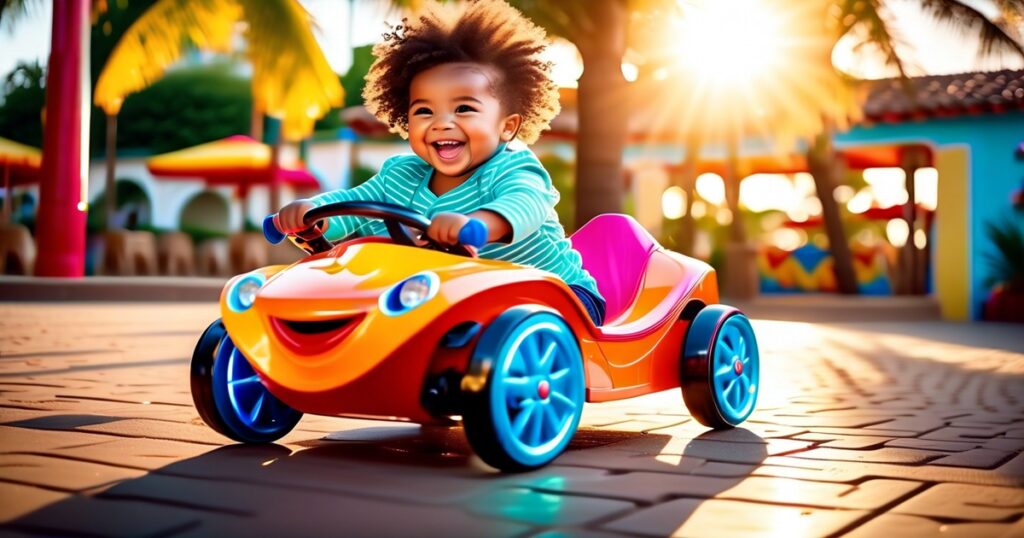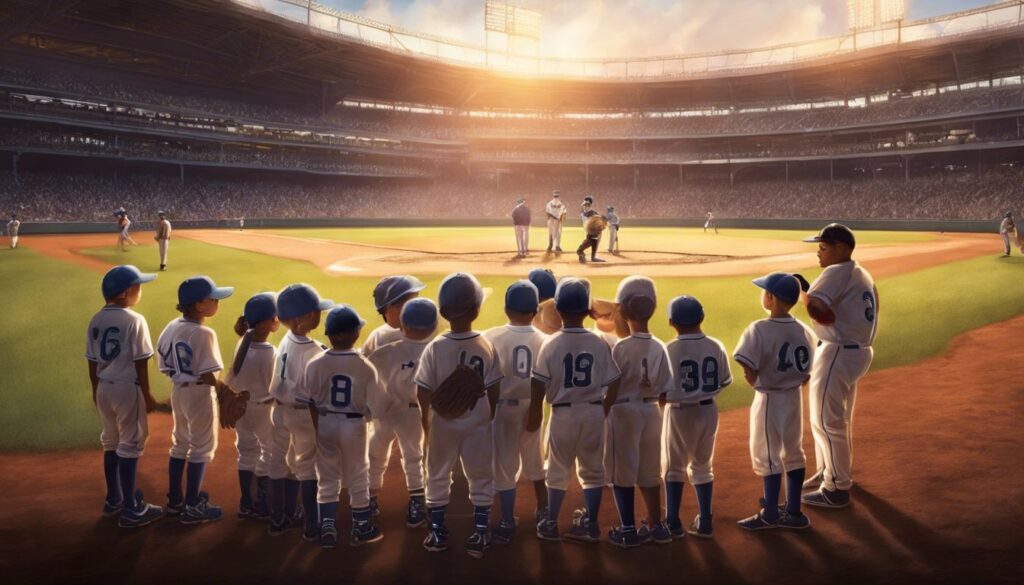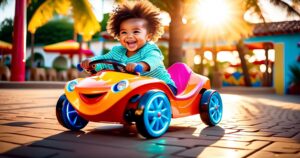Are Huskies Good with Babies? A Comprehensive Guide
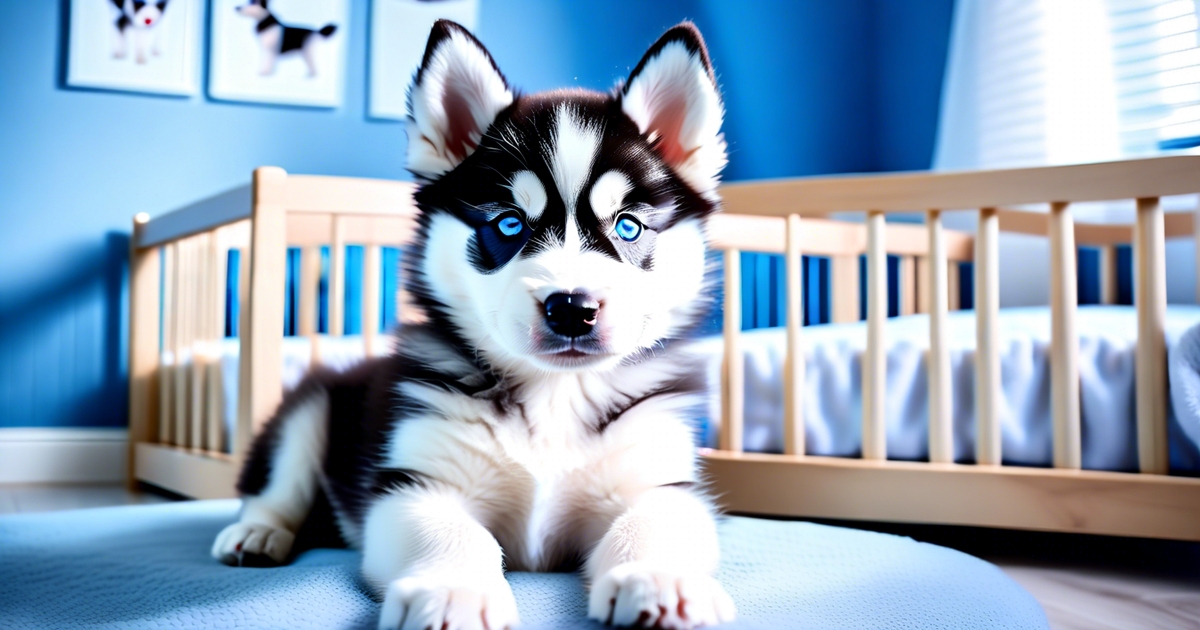
We may earn money or products from the companies mentioned in this post.
Ever wondered if those stunning huskies are a good match for your little one? Many families contemplate whether this captivating dog breed fits well in a household with babies. In this article, we will discuss whether or not, huskies are good with babies.
Understanding the Husky’s Temperament around Kids
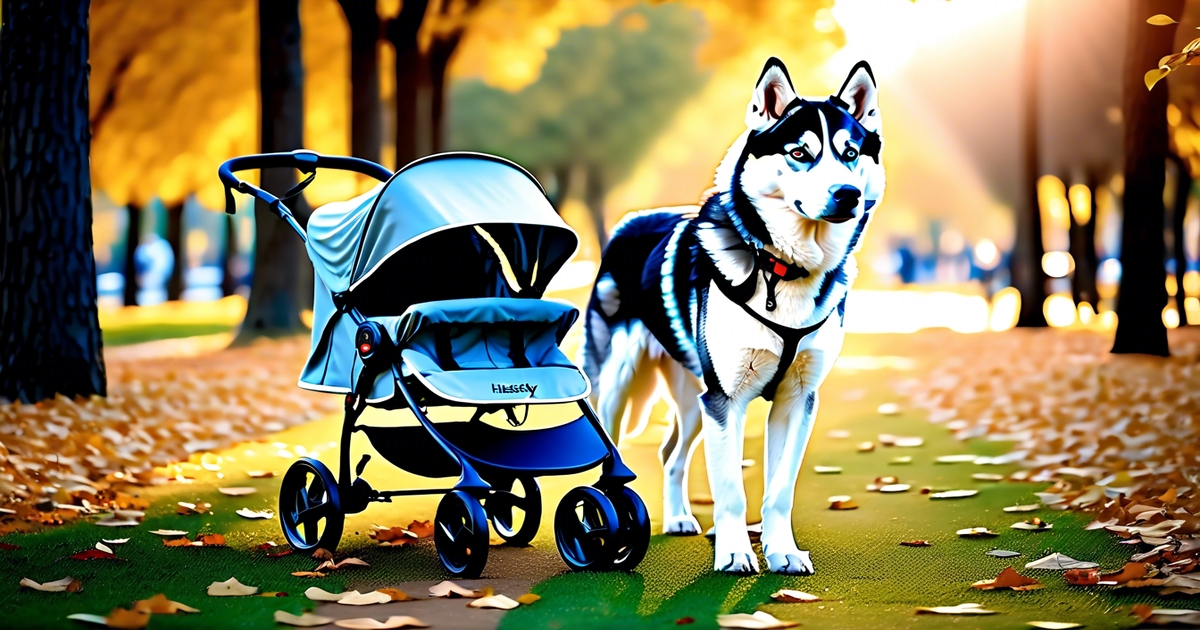
Gentle and Patient
Huskies are known for their gentle and patient nature, making them generally good companions for children. They often display a calm demeanor when interacting with kids, which can create a comforting environment for both the dog and the child. This temperament trait is essential in ensuring that huskies can coexist harmoniously with babies.
On the other hand, it’s crucial to note that while huskies are typically gentle, their large size and energetic disposition may pose some challenges when they interact with infants or toddlers. The playful nature of huskies could inadvertently lead to accidental knocks or bumps during playtime.
Playful and Energetic Nature
The playful and energetic nature of huskies can be endearing as they provide an active playmate for older children. However, this same energy level might require careful supervision around babies due to their delicate nature. It’s important to establish boundaries between the dog and child to ensure safety without compromising on fun interactions.
Understanding how huskies interact with kids is vital in creating a safe environment where both can thrive together. By recognizing these traits in huskies’ general temperament around kids, families can take proactive steps to foster positive relationships between their pets and little ones.
Socialization and Training for Huskies with Children
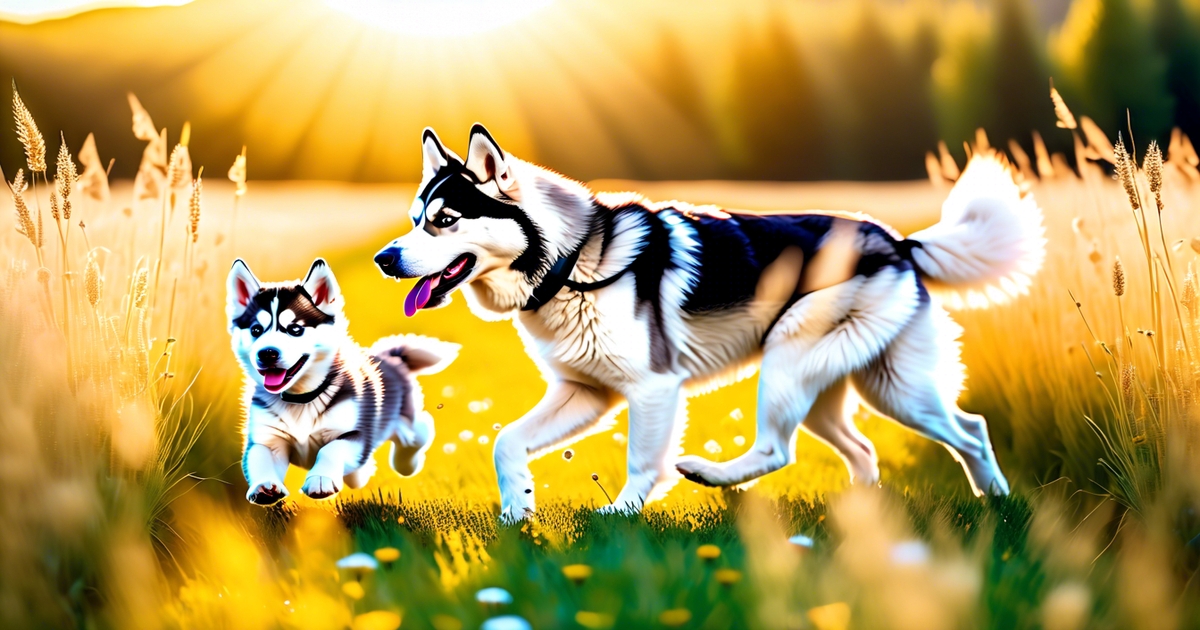
Early Socialization
Proper socialization ensures that huskies develop positive behavior around babies and children. It’s essential to expose huskies to various experiences, including interacting with kids, from a young age. This exposure helps them become familiar with the sights, sounds, and behaviors associated with children.
Huskies should be introduced to babies and toddlers in a controlled environment where they can observe their movements and behavior. Supervised interactions allow the husky to gradually adjust to the presence of children without feeling overwhelmed or anxious.
Proper Training
Basic obedience training plays a vital role in establishing boundaries for huskies when interacting with infants or young kids. Commands such as “sit,” “stay,” and “leave it” are essential tools that help reinforce positive behavior around children.
Consistency in training methods is key when introducing huskies to kids. The same rules should apply at all times, whether during playtime or everyday interactions with children. This consistency helps the husky understand what is expected of them when they are around babies or young ones.
Supervising Huskies around Babies for Safety
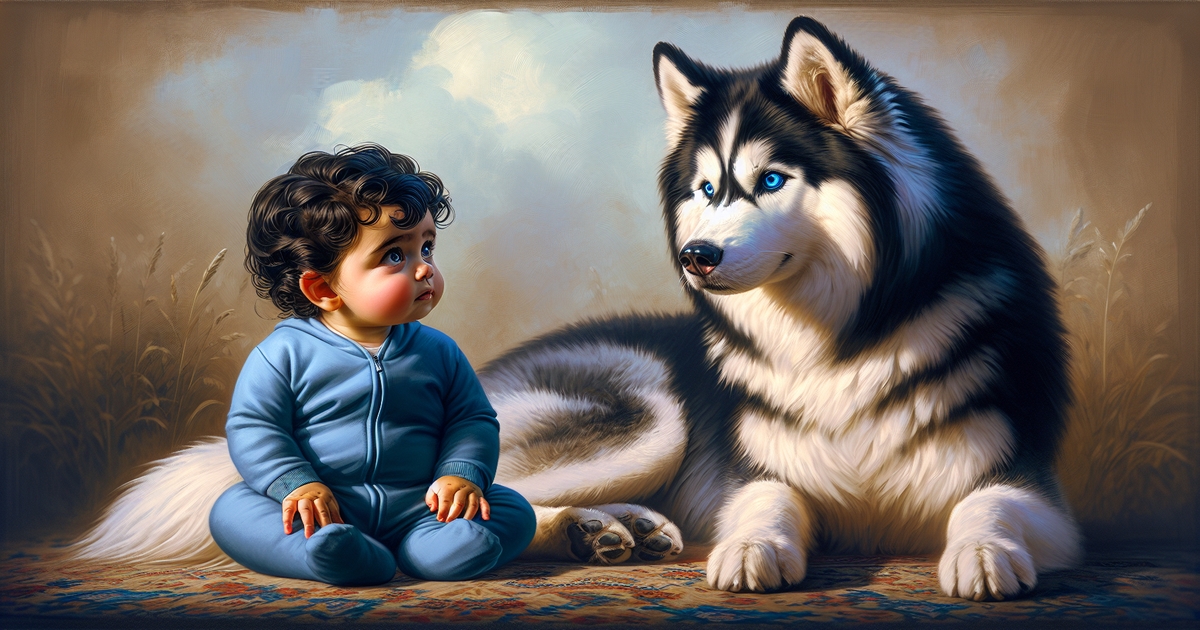
Close Supervision
It’s crucial to always keep a watchful eye on huskies when they are around babies. Even the most well-behaved dog can be unpredictable, especially when they are not accustomed to being around infants. Always ensure that an adult is present and attentive while the husky and baby are close.
Babies and young children may inadvertently provoke or startle a dog, leading to unexpected reactions. It’s essential to teach both the child and the husky how to interact with each other safely. For instance, teaching the child not to pull on the dog’s fur or tail, and training the husky about gentle behavior around babies.
It’s also important for parents or caregivers to be mindful of signs of stress or discomfort in their husky. If a husky shows signs of anxiety or agitation when near a baby, such as pacing, whining, or avoiding contact with the infant, it’s best to separate them until everyone feels at ease.
Use of Baby Gates
Using baby gates can provide an extra layer of safety by creating physical barriers between the husky and the baby if necessary. This allows for separation without complete isolation – keeping both parties safe while allowing visual interaction from a distance.
For example, if there are times when direct supervision is momentarily unavailable (e.g., attending briefly to another task), having a secure area where either party cannot access the other provides peace of mind for everyone involved.
The Energy and Playfulness of Huskies with Kids

Energetic Nature
Huskies are known for their high energy levels, making them great companions for active children. Their boundless enthusiasm matches well with the liveliness of kids, creating an ideal playmate dynamic. This energetic nature enables huskies to keep up with the constant movement and activity level of children.
Huskies’ playful disposition fosters a strong bond with kids. Engaging in interactive games and activities can help channel their energy positively, promoting a healthy relationship between the dog and the child. Through these interactions, both parties develop trust, understanding, and affection for each other.
Positive Engagement
Channeling their high energy levels into constructive activities benefits both the husky and the child. Taking daily walks together not only provides physical exercise but also strengthens their connection through shared experiences. Involving them in fun exercises like fetch or agility training creates opportunities for bonding while keeping both dog and child entertained.
Teaching Kids to Interact with Huskies Safely
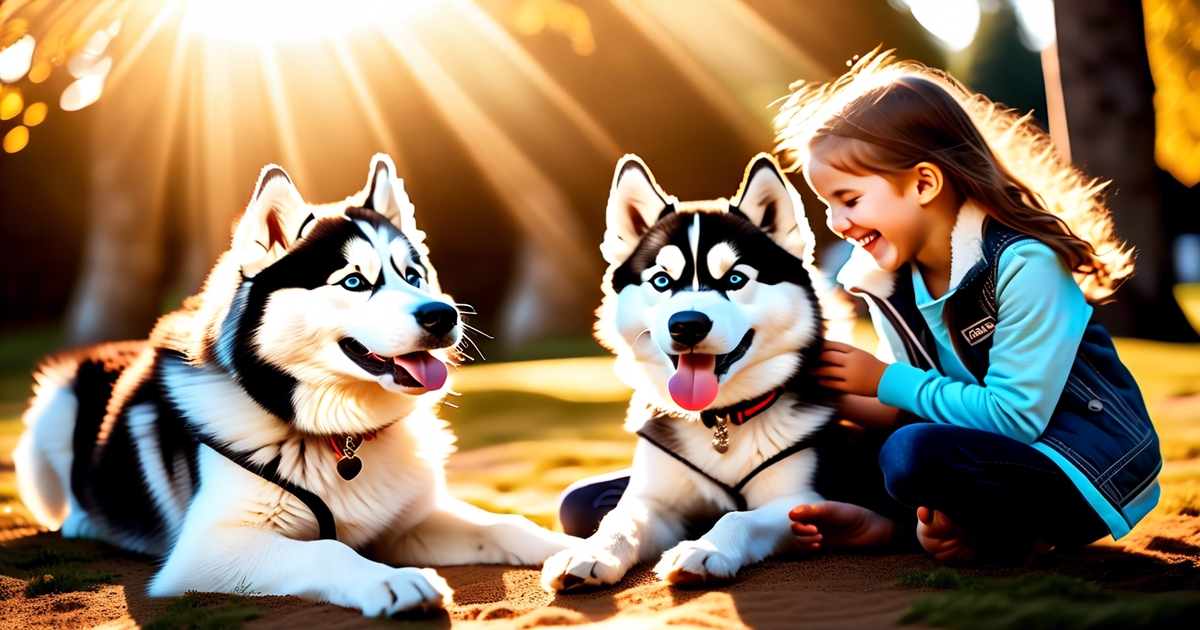
Appropriate Interaction
Teaching kids how to safely interact with huskies is crucial. They should learn to approach the dog calmly and avoid sudden movements. Encourage them to use gentle petting when interacting with the husky, avoiding rough play that might agitate the dog.
Children need to understand that they shouldn’t disturb the husky while it’s eating or sleeping. This teaches them about respecting the dog’s space and helps prevent any potential negative reactions from the husky.
Respecting Boundaries
Educating children about respecting a husky’s boundaries and personal space is essential for their safety. They need to be aware of signs that indicate when a husky wants some alone time, such as moving away or showing signs of discomfort.
Assessing a Husky’s Suitability for Your Family
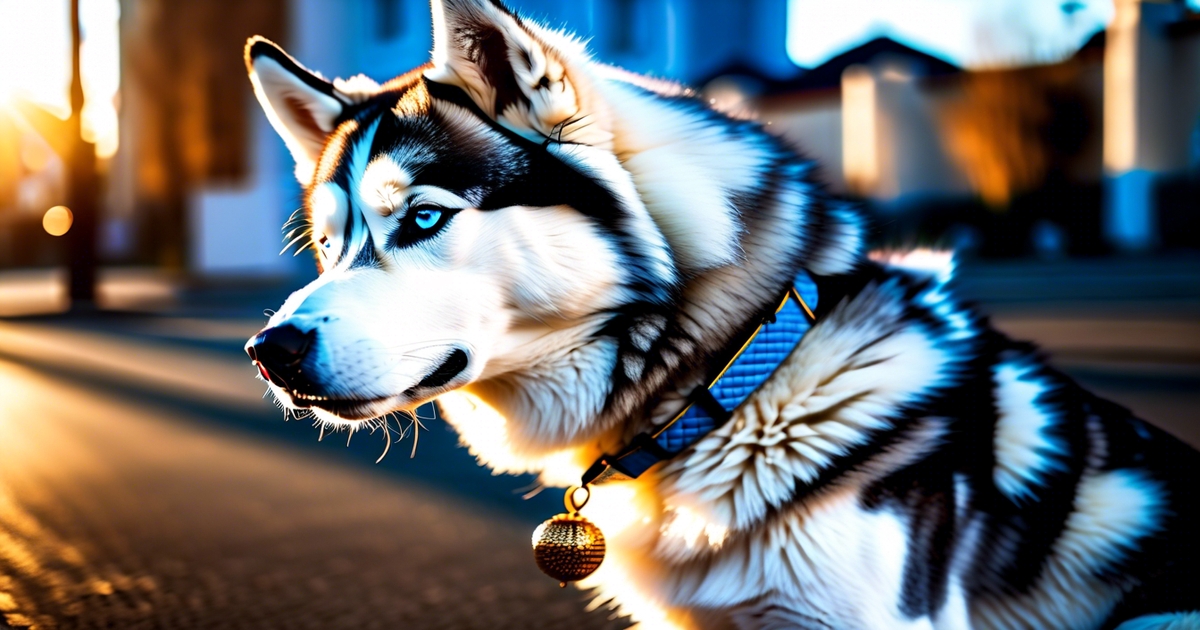
Lifestyle and Activity Level
When considering if huskies are good with babies, it’s crucial to assess your family’s lifestyle and activity level. Huskies are energetic, requiring regular exercise and mental stimulation. If your family leads an active lifestyle, enjoys spending time outdoors, and is committed to providing the necessary physical activities for a husky, they can be a great fit.
On the other hand, if your family has a more sedentary lifestyle with limited time for walks or playtime, it may not be the best environment for a husky. Their high energy levels can lead to boredom or frustration if not adequately exercised.
Temperament and Behavior Evaluation
Another important aspect when determining if huskies are suitable for families with babies is evaluating the specific temperament and behavior of the individual husky you are considering. While general breed characteristics provide insight into their traits, each dog has its own personality.
Some huskies may have calm temperaments and display patience around children, while others might be more excitable or less tolerant of unpredictable movements common in young children. It’s essential to spend time observing how a particular husky interacts with children before making any decisions about bringing them into your home.
Consulting with a reputable breeder or rescue organization can also provide valuable insights into the temperament of available huskies. They can help match you with a family member that aligns well with your household dynamics.
Tips for Introducing Huskies to Babies
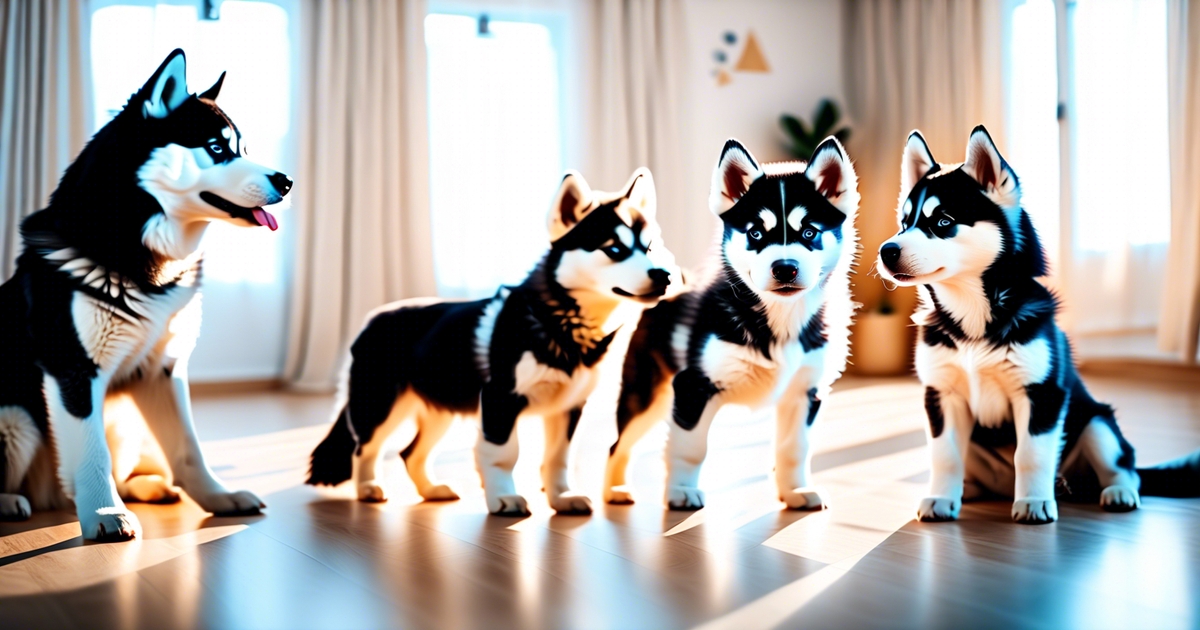
Gradual Introduction
When introducing a husky to a baby, it’s important to do so gradually. Start by allowing the husky to sniff the baby’s blanket or clothing before they actually meet. This helps familiarize the dog with the baby’s scent.
Introducing the husky and baby in a controlled environment is also crucial. For instance, keep the dog on a leash during initial interactions and ensure there are no sudden movements or loud noises that could startle either the dog or the baby.
Positive Reinforcement
Using positive reinforcement techniques can help associate the presence of the baby with rewards for your husky. Whenever your dog behaves calmly and positively around the baby, reward them with treats or praise. This will create positive associations in their mind.
It’s beneficial to maintain calm energy yourself when your husky is around your infant. Dogs often pick up on human emotions, so staying relaxed can help reassure your pet that everything is okay.
Seek Professional Guidance
If you have any concerns about introducing your husky to your newborn, seeking professional guidance from a certified animal behaviorist or trainer is highly advisable. They can provide personalized advice based on your specific situation and offer strategies for ensuring a smooth introduction between your pet and a new family member.
Creating a Harmonious Home with Huskies and Infants
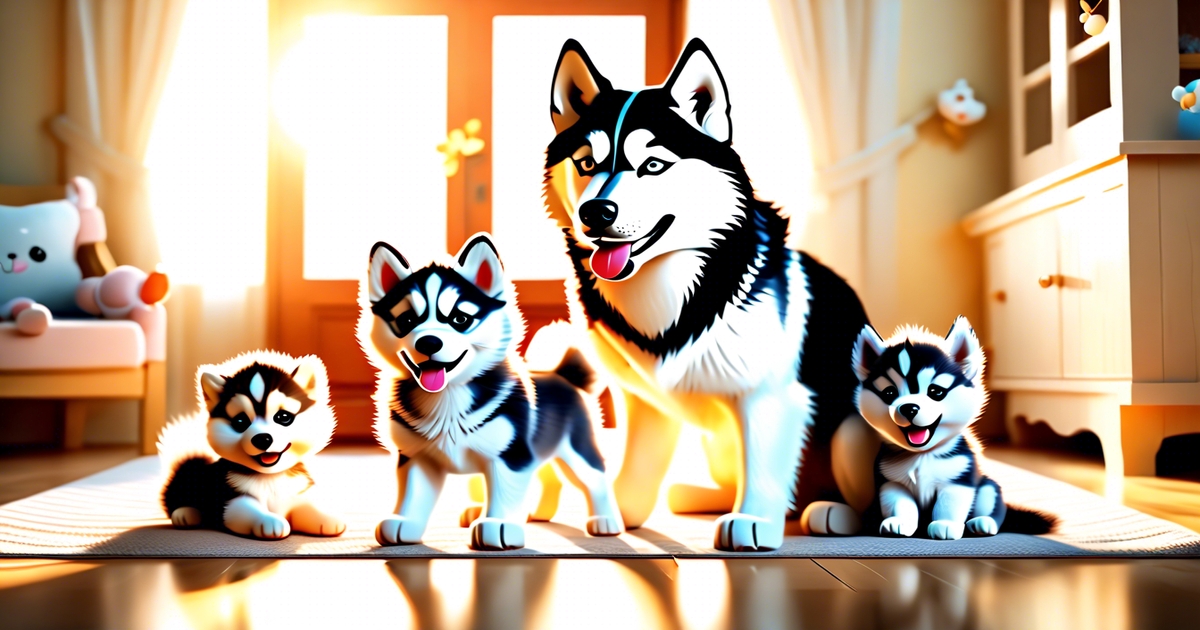
Routines
Establishing routines that involve both your husky and baby can help create a harmonious environment. For example, if you take your husky for a walk every morning, try to incorporate this into your baby’s routine as well. This way, both the dog and the baby feel included and cared for.
Creating joint activities such as playtime or feeding time can also strengthen the bond between your husky and the baby. For instance, you can engage in supervised play sessions where both the dog and the infant are involved in an activity together. This not only fosters positive interactions but also helps them get used to each other’s presence.
Separate Spaces
Providing separate spaces for your husky and your baby is crucial to ensure their individual needs are met. Your dog should have its own designated area where it can retreat when it needs space or quiet time. Similarly, creating a safe space for your baby ensures they have a secure environment away from the dog when needed.
Separate spaces also minimize potential conflicts and reduce any possible harm that may arise from unsupervised interactions between your husky and infant. By having distinct areas within the household for each of them, you’re promoting safety while fostering positive companionship between them.
Calm Environment
Maintaining a calm environment is essential in supporting positive interactions between Huskies and infants. Dogs are highly sensitive to stress, so keeping a tranquil atmosphere at home helps alleviate any potential anxiety or tension that may affect their behavior around babies.
Introducing soothing elements like soft music or gentle lighting during shared activities with both pets enhances relaxation for everyone involved. A serene setting creates an ideal backdrop for nurturing carefree moments between these family members without causing undue stress on either party.
Conclusion
So, there you have it – huskies and babies can definitely coexist harmoniously with the right approach. By understanding the husky’s temperament, socializing and training them, and supervising their interactions with babies, you can create a safe and joyful environment for both your furry friend and your little one. Remember, it’s all about setting clear boundaries, being vigilant, and fostering positive associations. With patience and consistency, your husky can become a loving companion to your baby, enriching their childhood with endless adventures and unwavering loyalty.
Now that you’ve got the lowdown on raising a husky alongside a baby, it’s time to put these insights into action. Take the necessary steps to introduce your husky to your infant in a controlled manner, prioritize safety at all times, and nurture a bond built on respect. Your efforts will not only ensure a beautiful relationship between your husky and baby but also pave the way for heartwarming memories that will last a lifetime.
Frequently Asked Questions
Are huskies good with babies?
Huskies can be great with babies if properly trained and supervised. Their gentle nature and high energy levels make them suitable playmates for older children. However, constant supervision is crucial to ensure the safety of both the baby and the dog.
How should I introduce my husky to my new baby?
Introduce your husky to the new baby gradually by allowing them to sniff each other’s blankets or clothing before a face-to-face meeting. Always supervise their interactions closely, rewarding positive behavior from the husky and ensuring a calm environment during introductions.
What training should I provide for my husky around babies?
Training your husky around babies involves teaching basic obedience commands like “sit,” “stay,” and “leave it.” Desensitizing your dog to common baby sounds such as crying can help acclimate them to living harmoniously with an infant.
Can all huskies be trusted around infants?
Not all huskies may be suited for interaction with infants due to their ytemperaments. It’s essential to assess your specific dog’s behavior, socialization history, and response to training before determining if they can be trusted around infants.
How do I create a safe environment for my baby when living with a husky?
Creating a safe environment involves setting boundaries between the baby’s space and the dog’s space using gates or barriers. Teaching both your child and Husky how they should interact while constantly supervising their interactions will also contribute significantly toward maintaining safety in the household.

